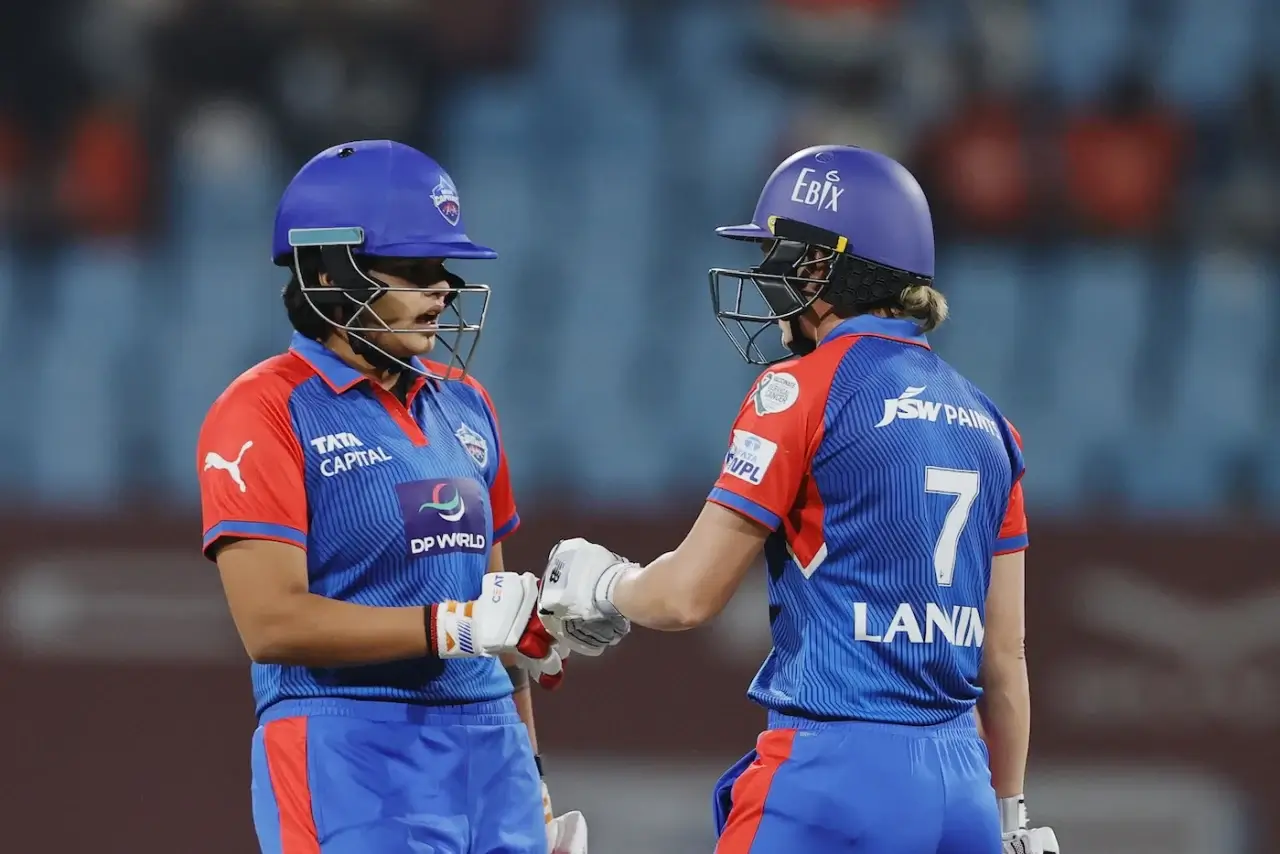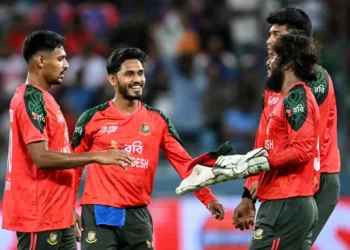The 2025 ODI tournament transformed women’s cricket globally and permanently. Stadiums that once hosted small crowds now echoed with loud, passionate supporters. Broadcast deals, prize funds, and franchise leagues converted visibility into professional investment quickly. Veterans who experienced quieter years describe these shifts as deep, structural, and lasting.
Thirush Kamini remembers the 2013 Cup at home with modest crowds. She recalls modest recognition, limited pathways, and fewer professional structures for players. Playing alongside global stars in foreign leagues changed confidence and tactical clarity. Exposure removed doubt and built a stronger belief in professional cricket as a career.
Marizanne Kapp sees the change through runs and totals posted consistently. Teams now cross 300 regularly, a number once rare in tournaments. Six-hitting and centuries rose, reflecting improved power, fitness, and tactical freedom. Statistics confirm coaching, conditioning, and league exposure created undeniable progress across global teams.
Suzie Bates praises the WPL for accelerating India’s transformation and fan culture. Danni Wyatt-Hodge notes wider public recognition and expanded media presence for players. Megan Schutt predicts tighter contests and bigger crowds across subcontinental venues this year. This article explores the causes, data, and assumptions guiding women’s cricket’s new momentum, especially in leagues.
Leagues and Exposure: Accelerating Match Readiness
Franchise leagues reshaped careers by offering daily elite-level competition. The WPL, WBBL, and The Hundred created regular high-pressure environments for players. These tournaments brought specialist coaches, data analysts, and sports science into daily routines. Players learned tactical maturity and quicker decision-making through constant international-standard exposure.
Younger cricketers now see clear pathways from academies to professional leagues. Scouting widened talent networks and turned raw ability into match-ready performance pipelines. Playing with international teammates taught variations, match-ups, and mental discipline under pressure. Franchise systems narrowed skill gaps between traditional cricket giants and developing national squads.
Leagues also deepened tactical awareness by embedding analytics into preparation. Teams practiced simulations, scenario drills, and high-intensity workloads like men’s cricket. This knowledge transfer balanced international contests and made tournaments consistently competitive worldwide. Franchise cricket has therefore become the fastest route to sustainable readiness and depth.
How leagues raised national standards?
Franchise exposure gave players early contact with varied conditions and elite coaches. Teams benefitted from shared skill sets, mental frameworks, and professional benchmarks. Match-up data and tactical analysis improved decision-making at both domestic and global level. These structures raised baseline standards across nations and shortened development gaps considerably.
Fitness, Science, and Longer Careers
Sports science integration changed how athletes train, recover, and perform consistently. Strength programmes, monitoring systems, and nutrition plans became standard for global squads. Faster recovery and higher endurance allowed players to maintain peak levels longer. These improvements let veterans extend careers while mentoring rising players in pressure moments.
Biomechanics and video tools helped correct technical flaws with measurable efficiency. Targeted strength training boosted power hitting and reduced recurring soft tissue injuries. Recovery systems allowed players to endure packed schedules without major performance drops. These practices powered higher scores and improved bowler consistency throughout the tournament.
Investment in science created competitive advantages for nations with resources. India’s focus produced deeper batting depth and stronger physical conditioning domestically. Smaller boards improved when franchise leagues supplied access to fitness expertise regionally. Science, therefore, lifted not only individuals but also the structural pipelines feeding national teams.
Key science practices improving outcomes
Daily workload tracking prevented fatigue-related injuries during intense cricketing cycles. Nutrition and recovery schedules gave athletes the stamina for consecutive high-intensity matches. Technical adjustments through biomechanics boosted efficiency and reduced risks in long careers. Together, these methods explain higher scoring rates and sustained competitiveness across tournaments.
Money, Visibility, and the Economics of Growth
The 2025 prize pool redefined financial expectations for women’s cricket worldwide. Bigger rewards encouraged boards to prioritise structures, contracts, and coaching programmes. Professional contracts let players treat cricket as a career rather than part-time. Stable income translated into stronger preparation, better equipment, and higher domestic standards globally.
Broadcast deals monetised women’s cricket and proved commercial potential to advertisers. Sponsors recognised strong returns from partnerships and expanded grassroots programme funding. Revenue cycles from leagues fed academies and regional tournaments consistently. This reinvestment loop created broader pipelines and strengthened national team depth across continents.
Public visibility raised players as cultural icons and inspirational figures. Fans follow athletes on digital platforms, growing brand value and commercial presence. Media coverage expanded beyond match recaps into storytelling and analytical features daily. This cultural shift cemented women’s cricket as both a professional career and commercial product.
How finance shaped player growth and fan engagement?
Secure contracts helped players reinvest in training, nutrition, and career longevity. Broadcast visibility attracted young fans and generated sponsor-driven activations globally. Community-level sponsorships increased grassroots participation, especially among girls in schools. These combined impacts turned women’s cricket into a sustainable ecosystem of performance and revenue.
Tactical Evolution and Smarter Play
Batting approaches changed dramatically with more power hitting and calculated pacing. Teams refined innings structures with rotations early and acceleration late consistently. Run rates climbed, and boundary counts doubled compared to earlier tournament cycles. Bowlers responded with cutters, yorkers, and smarter death-over tactics under pressure.
Centuries now occur more often, making tactical fielding adjustments vital. Teams used data to position fielders for high-probability strike zones. Death bowling improved with better planning, variation, and scenario rehearsals across squads. Together, these elements made matches more complex, competitive, and strategically layered than before.
Coaches emphasised planning for phases, match-ups, and player-specific strengths. Practice drills simulated high-pressure endings, replicating finals-like match intensity consistently. Tactical growth reflects not only fitness gains but also expanded knowledge sharing globally. Women’s cricket has therefore entered a new phase of innovation and competitiveness.
Statistical proof of tactical growth
Teams produced dozens of 300-plus totals during recent international cycles. Six-hitting frequency nearly doubled compared with earlier tournaments. Boundary ratios fell, highlighting aggressive shot-making and effective fitness training. Numbers show how tactical and physical improvements directly translated to outcomes on the field.
Cultural Momentum and India’s Fan-Driven Growth
India became the beating heart of this new cricketing wave. Subcontinental stadiums filled with fans who created loud, passionate match-day experiences. Icons like Smriti Mandhana and Jemimah Rodrigues inspired thousands of young girls. Grassroots academies reported record participation levels following the WPL’s cultural push.
Community programmes translated fan enthusiasm into structured cricket education. Local tournaments and clinics converted inspiration into professional training opportunities. This rapid cultural adoption built a wider base of competitive players nationally. India’s success showed how investment, culture, and media together created unstoppable growth momentum.
Stakeholders must now sustain momentum through facilities, coaching, and governance. Balanced investment across states will prevent resource gaps within regions. Long-term sustainability depends on turning hype into permanent structural development. India’s case proves cultural energy can fuel both grassroots participation and global competitiveness.
How fan engagement turned into grassroots systems?
Match-day events created direct connections between fans and professional players. Clinics and school visits ensured young girls saw cricket as achievable early. Franchises amplified connections with media campaigns and interactive fan content. These steps ensured short-term popularity converted into long-term participation pathways consistently.
Planning and Investing For The Next Decade
Franchise leagues will expand into more emerging markets quickly. New investment will grow talent pools and establish regional excellence centres globally. Boards must prepare scalable systems to absorb new talent sustainably. Prepared nations will benefit faster and deeper from these expansions.
Broadcast innovation will monetise cricket across new formats and platforms. Interactive streams and gamified experiences will bring unique sponsor opportunities. Strong rights strategies will support longer seasons and expanded fixture calendars. Boards prioritising broadcast strength will see financial stability and reach.
Sports science will trickle into grassroots systems via low-cost tools. Early access to biomechanics, fitness, and nutrition will shape youth careers. This diffusion of science will raise both technical quality and injury prevention. Nations investing early will reap generational benefits from these foundations.
Analytics-driven coaching will become standard across global cricket. Cloud-based tools will support talent ID and personalised player training systems. Even smaller boards will benefit from accessible digital coaching solutions. This democratisation will raise competitiveness and narrow gaps across nations.
Conclusion
The 2025 ODI tournament stands as a turning point for women’s cricket worldwide. Leagues, financial growth, and science combined to raise standards rapidly. Players now have sustainable careers, reliable systems, and higher international competitiveness. What began as a breakthrough has become a permanent transformation for the sport.
Future growth depends on structured investment, equal opportunities, and governance strength. Girls now see cricket as a clear career path with role models. The next decade must build inclusivity, coaching access, and sustainable scheduling. If executed well, today’s gains will become the foundation for global parity.
Women’s cricket has finally crossed into a permanent professional era. What was once distant hope is now structural reality. With careful planning, boards and franchises can sustain momentum and widen opportunities. The revolution of 2025 can become the golden baseline for generations ahead.















